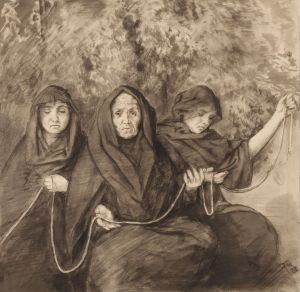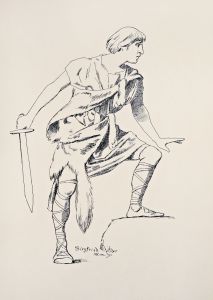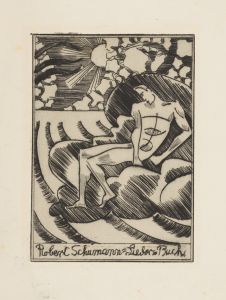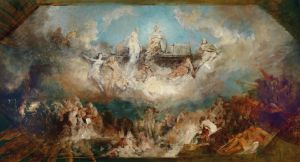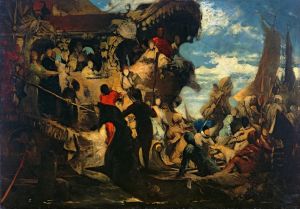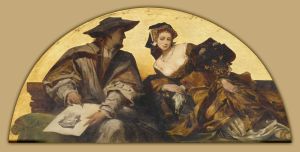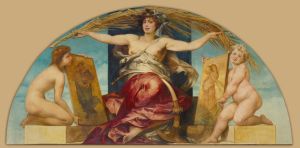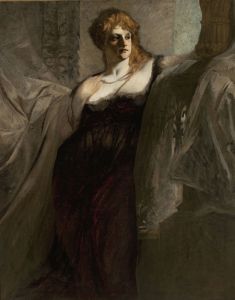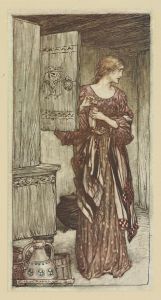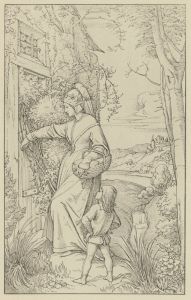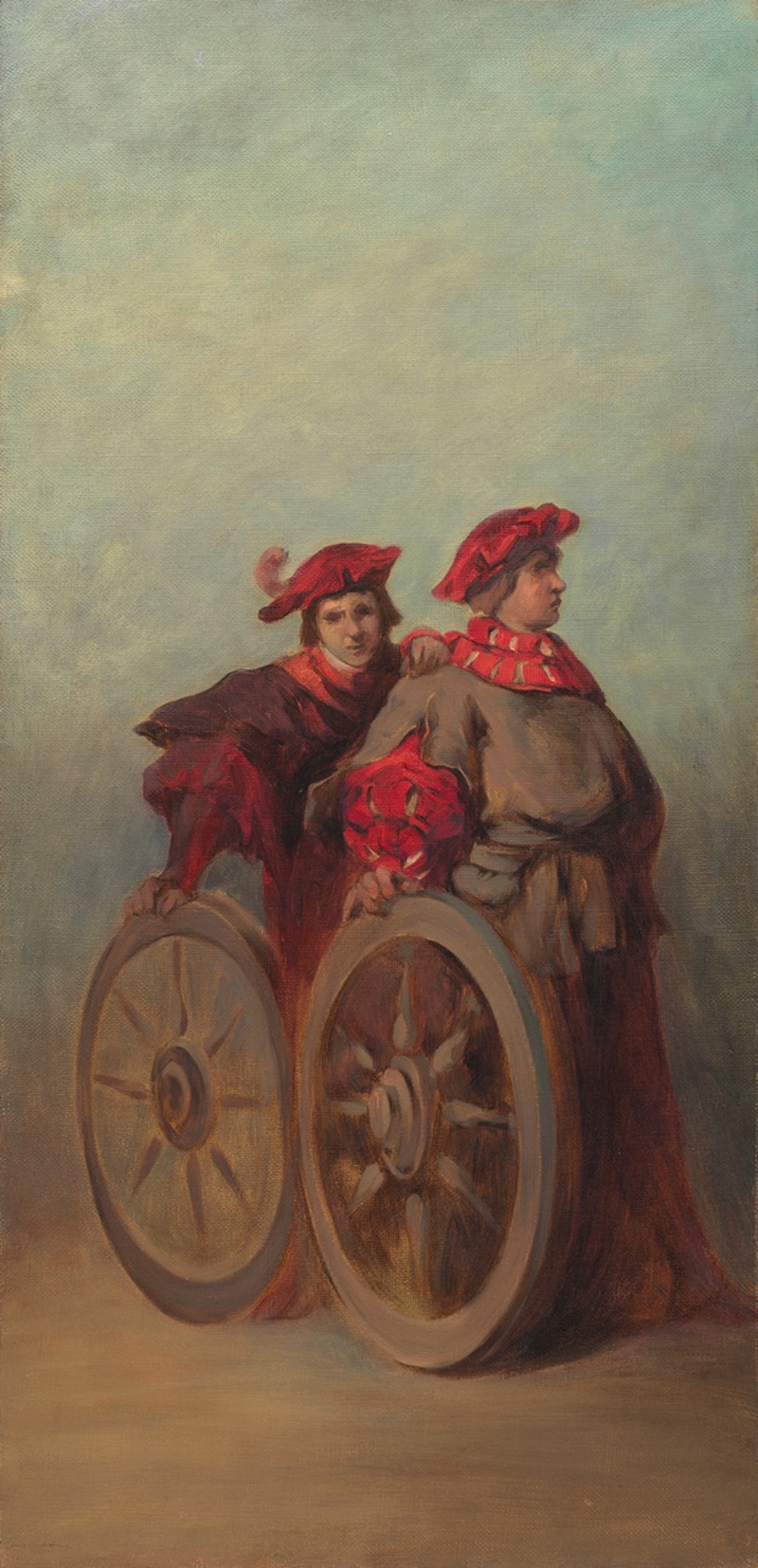
Entwurf zum Festzug 1879 – Zwei Wagnergesellen
A hand-painted replica of Hans Makart’s masterpiece Entwurf zum Festzug 1879 – Zwei Wagnergesellen, meticulously crafted by professional artists to capture the true essence of the original. Each piece is created with museum-quality canvas and rare mineral pigments, carefully painted by experienced artists with delicate brushstrokes and rich, layered colors to perfectly recreate the texture of the original artwork. Unlike machine-printed reproductions, this hand-painted version brings the painting to life, infused with the artist’s emotions and skill in every stroke. Whether for personal collection or home decoration, it instantly elevates the artistic atmosphere of any space.
"Entwurf zum Festzug 1879 – Zwei Wagnergesellen" is a painting by the Austrian artist Hans Makart, created in 1879. Hans Makart (1840-1884) was a renowned painter and decorator of the 19th century, known for his historical paintings, portraits, and allegorical works. He played a significant role in the cultural life of Vienna during his time, influencing the city's artistic scene and contributing to the development of the "Makartstil" or "Makart style," characterized by its opulent and dramatic aesthetic.
The painting "Entwurf zum Festzug 1879 – Zwei Wagnergesellen" translates to "Design for the Parade 1879 – Two Journeyman Carpenters." It was part of a series of designs created by Makart for a grand parade held in Vienna in 1879. This parade was organized to celebrate the silver wedding anniversary of Emperor Franz Joseph I and Empress Elisabeth of Austria. The event was a significant cultural and social occasion, showcasing the grandeur and splendor of the Austro-Hungarian Empire.
Makart was commissioned to design the parade, which included a series of floats representing various historical and allegorical themes. His designs were highly detailed and reflected his distinctive style, characterized by rich colors, elaborate compositions, and a sense of theatricality. The painting "Zwei Wagnergesellen" depicts two journeyman carpenters, likely intended to represent the skilled labor and craftsmanship that were highly valued in the empire.
The figures in the painting are depicted in traditional attire, with tools of their trade, emphasizing their role and importance in society. Makart's attention to detail and his ability to capture the essence of his subjects are evident in this work. The painting not only serves as a design for the parade but also stands as a testament to the artist's skill in portraying human figures and their professions with dignity and respect.
Makart's involvement in the 1879 parade solidified his reputation as a leading artist of his time. His designs were widely praised for their creativity and execution, contributing to the overall success of the event. The parade itself was a grand spectacle, with Makart's floats being one of the highlights, drawing admiration from both the public and the imperial family.
Today, Hans Makart is remembered as one of the most influential artists of the 19th century in Austria. His works, including "Entwurf zum Festzug 1879 – Zwei Wagnergesellen," continue to be studied and appreciated for their artistic merit and historical significance. The painting remains an important example of Makart's contribution to the cultural heritage of Vienna and the broader Austro-Hungarian Empire.





